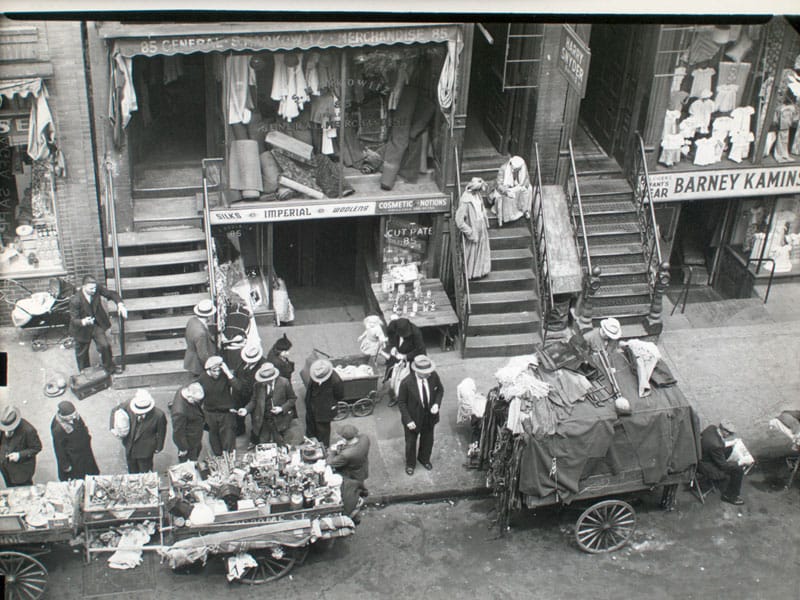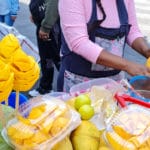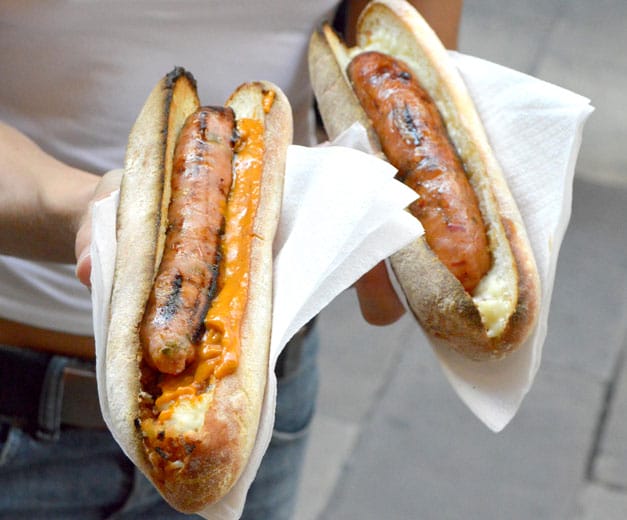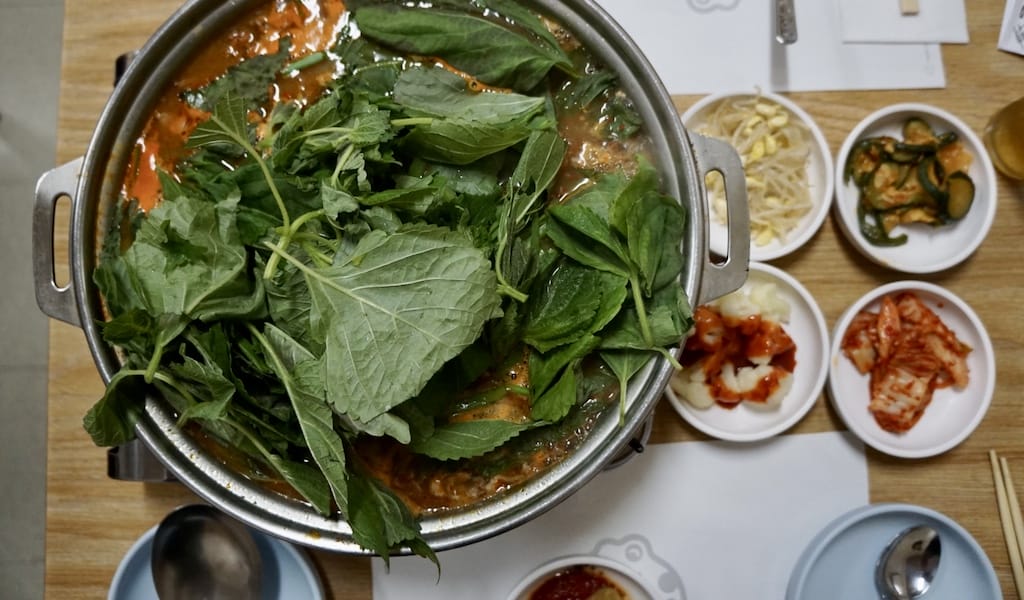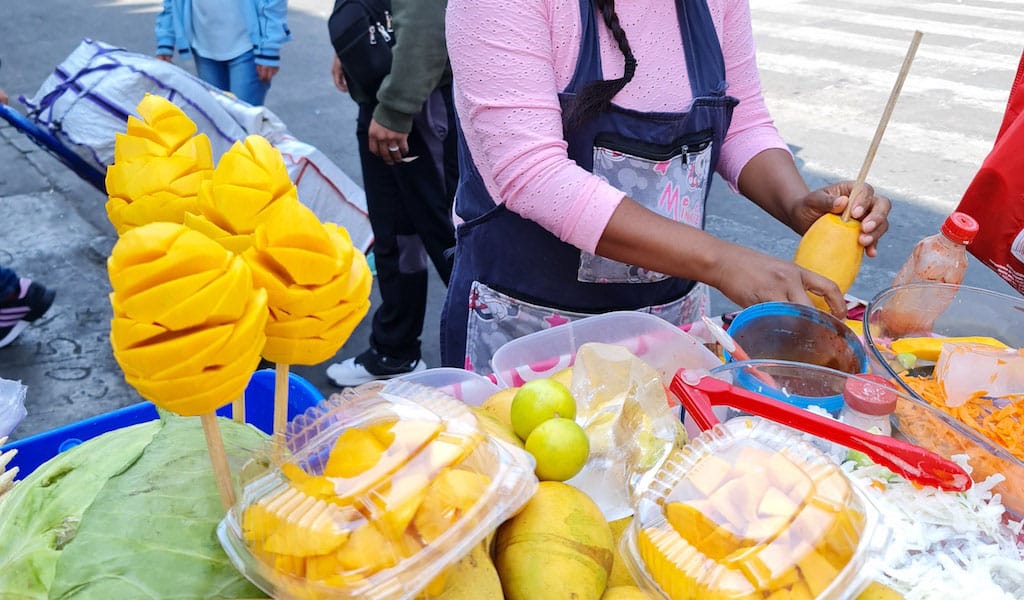Queens these days is New York’s street cart central. According to the Street Vendor Project, which advocates for vendor rights in the five boroughs, the largest concentration of street vendors with licenses lives in that borough. This concentration of streetside sellers is easy enough to see on six-mile-long Roosevelt Avenue, which runs through six of Queens’ most ethnically diverse neighborhoods with a dizzying assortment of vendors catering to almost every taste and nationality, depending on the time of day.
It’s not always easy work. At a recent monthly meeting of street vendors in Corona, Queens, the air was thick with grievances about the conditions they have to work under. Jorge and Narcissa, a couple who sells Ecuadorian food, told of repeatedly being ticketed or forced to move their cart because of complaints from a local businessman who doesn’t want them selling from in front of his store. The duo has explained to the storeowner about their right to vend, but “the owner calls the police, and the police come, and always make us move our cart.”
“How do we make a living with these constant troubles?” they asked.
 This profusion of street vendors – and the troubles they face – are nothing new; they’ve only migrated to another borough. In Manhattan and Brooklyn it was the same a hundred years ago. Immigrants plied carts and peddled merchandise up and down the Lower East Side’s crowded cobbled streets. Then and now street vendors were migrants, peddlers, hucksters and entrepreneurs, all rolled into one.
This profusion of street vendors – and the troubles they face – are nothing new; they’ve only migrated to another borough. In Manhattan and Brooklyn it was the same a hundred years ago. Immigrants plied carts and peddled merchandise up and down the Lower East Side’s crowded cobbled streets. Then and now street vendors were migrants, peddlers, hucksters and entrepreneurs, all rolled into one.
In 1906, several peddlers’ associations existed in New York City: The United Citizens’ Peddlers’ Association of Greater New York had six branches, four for Jews, one for Italians and one for Greeks. In addition, there was the Push-cart Vendors’ Association of Harlem and the Brooklyn Peddlers’ Association.
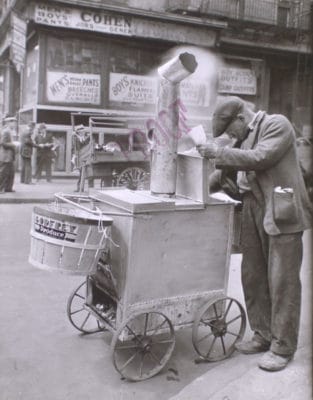 According to the 1906 Report of the Mayor’s Push-cart Commission that focused on tenement areas of the Lower East Side and Brooklyn, 97 percent of the Lower East Side vendors were foreign born and mainly Jewish, Italian, and Greek; the origins of the rest were Austrian, Bulgarian, English, German, Hungarian, Irish, Spanish, Swedish, Turkish and American. Disparaged in the Report for being a threat to brick-and-mortar establishments and a menace to the order and cleanliness of the streets, Lower East Side and Brooklyn vendors persevered and later moved up the economic ladder to run lasting brick and mortar businesses.
According to the 1906 Report of the Mayor’s Push-cart Commission that focused on tenement areas of the Lower East Side and Brooklyn, 97 percent of the Lower East Side vendors were foreign born and mainly Jewish, Italian, and Greek; the origins of the rest were Austrian, Bulgarian, English, German, Hungarian, Irish, Spanish, Swedish, Turkish and American. Disparaged in the Report for being a threat to brick-and-mortar establishments and a menace to the order and cleanliness of the streets, Lower East Side and Brooklyn vendors persevered and later moved up the economic ladder to run lasting brick and mortar businesses.
For poor and migrant vendors today, nothing much has changed. They confront the same attitudes expressed in the 1906 Report and struggle to change minds and government policies. Watch this short video “Peddlers, Police, and Power: 1906 versus 2016” that pulls from the 1906 Report and archival photos.
Published on August 05, 2016
Related stories
September 12, 2014
BarcelonaEditor's note: We regret to report that Butifarring has closed. Gourmet fast food has swept through Spain at full speed. It comes in multiregional styles and with strong creative inspiration behind it – and, most importantly, the food itself can be exceptional. Eric Camp, Albert Gómez and their three partners are a good example of…
October 24, 2023
Los AngelesIt’s no secret that Los Angeles has an amazing Korean food scene. L.A.’s Koreatown is the largest in the United States, with over 500 restaurants, so Angelenos are lucky enough to find restaurants that specialize in less common dishes, beyond the popular Korean barbecue or bibimbap. One such dish is yeomso tang (also spelled yumso…
April 9, 2021
Mexico CityWe know that spring has arrived in Mexico City when street carts crowned with whole mangoes begin to roll into town. While wandering the Centro Histórico’s bustling streets just last week, we bumped into Maria, a seasonal worker whose cart is currently laden with this favorite springtime fruit. Intrigued, we stopped to watch as she…







































